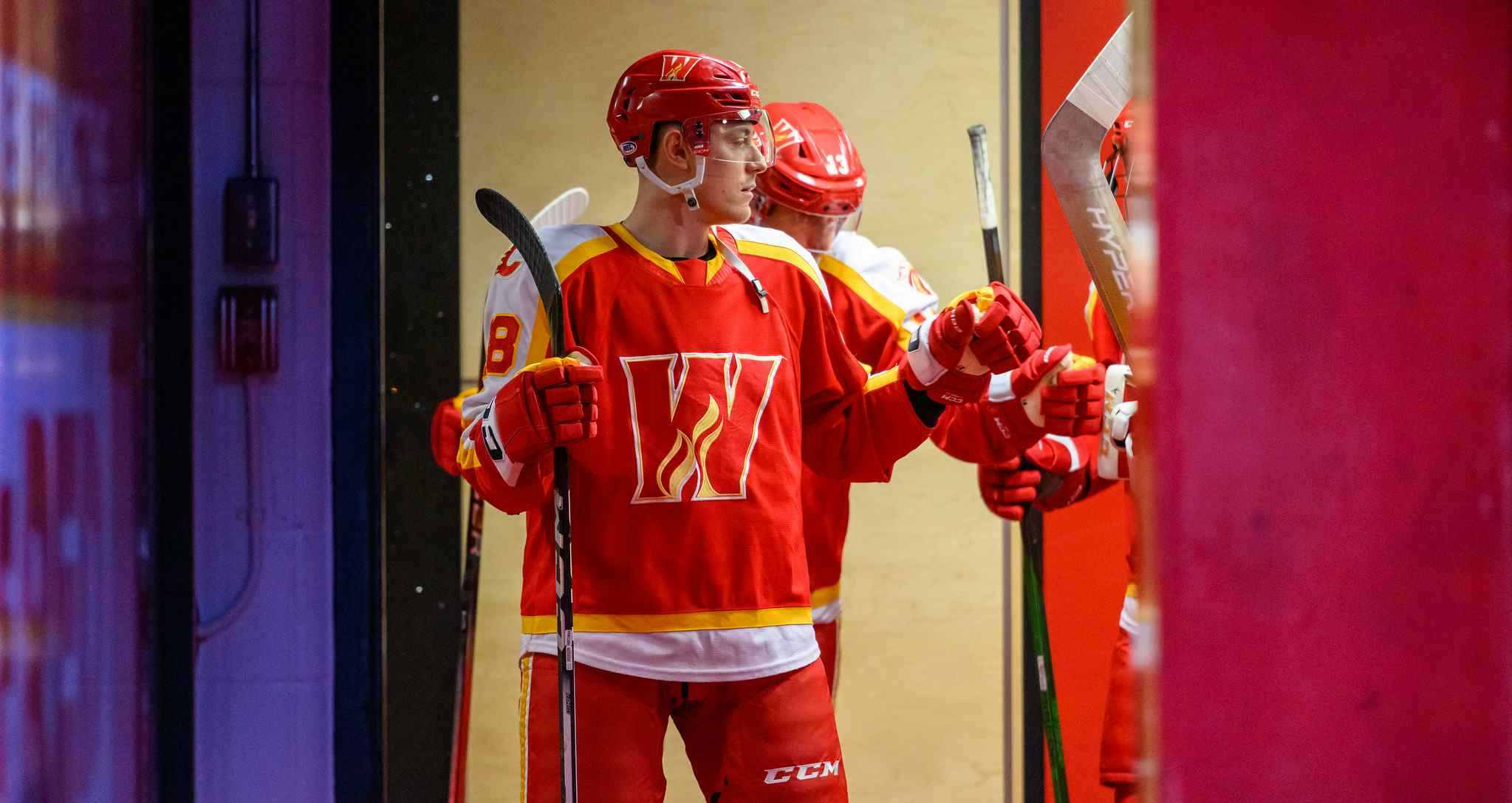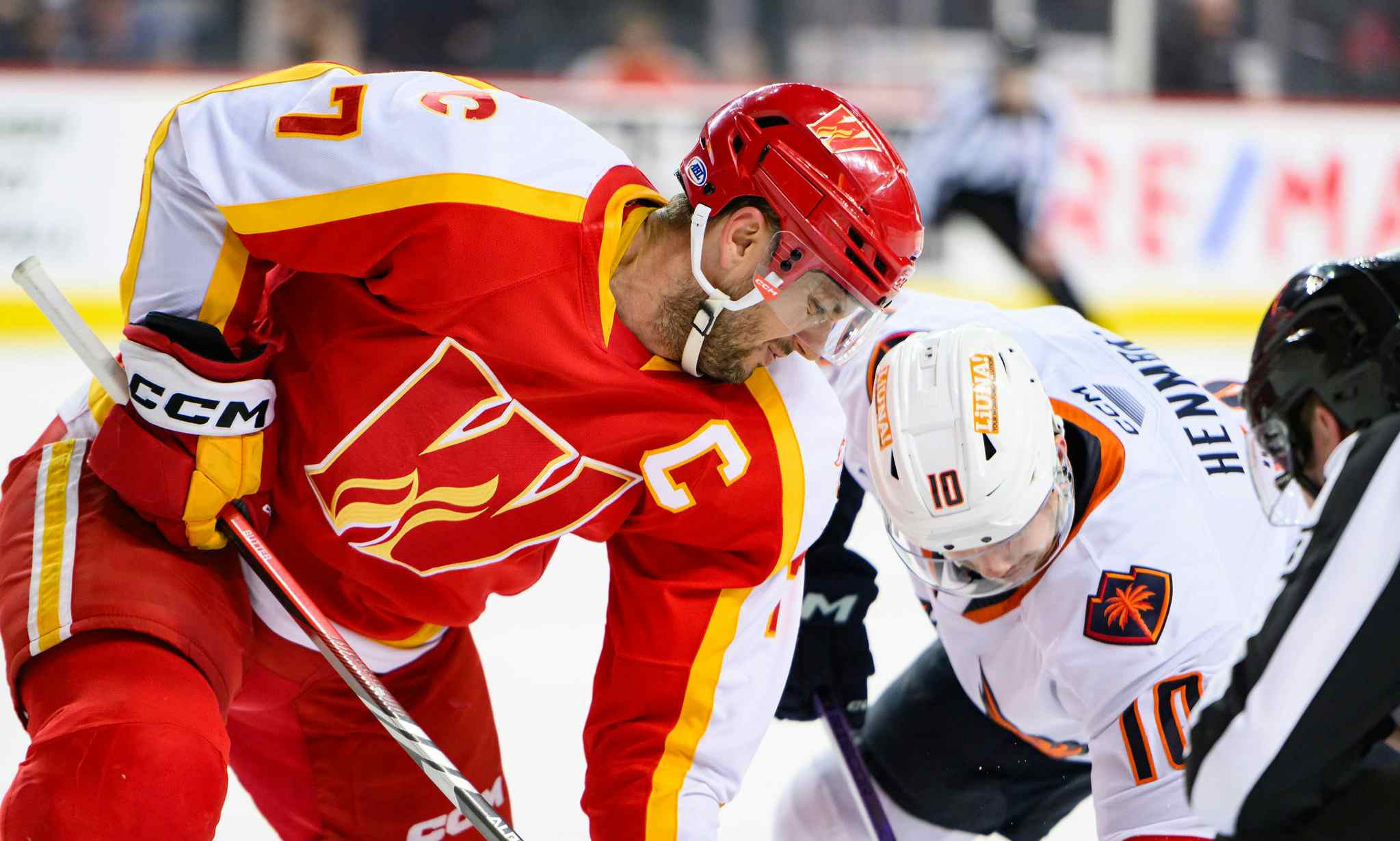RFA Profile: Micheal Ferland

While Micheal Ferland burst onto the scene with the Calgary Flames thanks to his savage performance in the 2015 postseason, his true coming out party wasn’t until this past season. During the 2016-17 campaign, Ferland emerged as one of the team’s most consistent forwards and took off offensively in the final two months. Now, in need of a new deal as a pending restricted free agent, Ferland sure looks like an important piece for the Flames for the foreseeable future.
This look at Ferland is the fourth of our free agent profiles this summer with our focus shifting to unrestricted players next. Here’s what we have so far:
Now looking for his third NHL contract, Ferland has more leverage than he ever has. In saying that, though, nailing down what his next deal might look like isn’t the easiest of exercises.
Evidence
Now with three NHL seasons under his belt, Ferland has gradually turned into an effective forward and has improved each year in the league. A quick look at Ferland’s progression since his rookie season shows you that.

Ferland has certainly had his peaks and valleys during his brief NHL career. After setting the league on fire with his playoff performance against the Vancouver Canucks in April 2015, Ferland’s follow-up season (with a one-way contract in tow) was somewhat underwhelming. While he wasn’t bad and never hurt the team, Ferland didn’t quite live up to the expectations many had after the impact he made the prior spring.
Ferland’s 2016-17 season, though, was solid the whole way through. Granted, most of his offence came in the final few months after being put on a line with Sean Monahan and Johnny Gaudreau. Prior to that trio’s formation, though, Ferland was generally effective with myriad linemates. In fact, if you go back to December, I outlined Ferland’s underrated impact on the team in an early piece about protecting him in June’s expansion draft.
When I wrote that column, Ferland was about halfway through the season and was one of Calgary’s top ranked forwards in both possession and scoring metrics. Once being put with Monahan and Gaudreau (more on that in the next section), those numbers only got better. The ranks below are amongst Flames’ forwards last season. All scoring rates courtesy Corsica.

Basically, Ferland was right there with Kris Versteeg as Calgary’s “best of the rest” forward, if you assume Gaudreau, Monahan, and the 3M Line are the five best on the team. For his $825,000 cap hit, Ferland was dynamite value for the Flames in 2016-17, and much of what he accomplished looks sustainable going forward.
Deliberation
Of course, it would be easy to chalk Ferland’s emergence up to his promotion to the team’s top scoring line. Obviously riding shotgun with Monahan and Gaudreau is going to do wonders for most players’ numbers, and Ferland was no different. That trio was formed prior to Calgary’s thrilling 6-5 overtime win in Nashville on Feb. 21, a game where Ferland scored twice in the first period. His production continued to see a dramatic spike for the rest of the season.

As you can see, Ferland went from being decently productive at five-on-five to being one of the team’s most prolific even strength scorers. It’s important to note, though, even after being grouped with Monahan and Gaudreau late in the season, Ferland was still barely seeing any powerplay time. Over his 76 games, Ferland averaged just 0:27 of powerplay time per game, while only four of his 25 points came on the man advantage. That helps explain why Ferland’s even strength scoring rates were as high as they were over the course of the season.
While Ferland gained a ton by being placed on the right side of the team’s top scoring line, Monahan and Gaudreau benefitted by the decision, too. Because they formed a cohesive line, everyone’s offensive numbers went way up from Feb. 21 on.

As you can see, the bump both players saw in their even strength scoring rates was staggering. Of course, I’m not saying Ferland is the only reason why things took such a dramatic turn. Both Monahan and Gaudreau had slow starts and really found their groove in the final months of the season. But to say Ferland didn’t contribute significantly would be burying your head in the sand.
It is important to note how high Ferland’s shooting percentage was last season, which is the only indicator that points to regression. At 14.2%, Ferland shot the lights out in 2016-17 and he’ll see that come down at some point, likely next season. However, if he continues being a solid possession player, I think 10-20 goals per season is reasonable even when his shooting percentage normalizes a little bit.
Verdict
Let’s get the easy stuff out of the way. First off, the Flames should, and almost certainly will, protect Ferland in the expansion draft because there’s a very good chance he’d get selected if left exposed. In that same vein, then, it makes sense for Calgary to qualify Ferland prior to the June 25 deadline. After that, though, things get a little more difficult.
Personally I’m pretty sold on Ferland and would push for a longer term deal, as in a term longer than one or two years. But to sign Ferland to, say, a four-year deal, they’d be buying up some of his UFA earning years, which might push the price a little higher. There are a lot of things at work here, but coming off a really solid season, Ferland has some decent leverage in the negotiations.
Making matters more complicated is Ferland’s arbitration status, as he’s eligible to go down that road this summer. The arbitration deadline is July 5, so we’ll know be then if Ferland chooses that option. Because of all the elements involved, I’m really not sure what this deal will end up looking like at the end of the day. However, I don’t think a three- or four-year contract between $1.5 and $2 million per season is crazy, because I think keeping him in the fold for the next number of years is important.
Recent articles from Pat Steinberg





